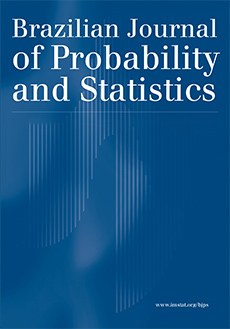Abstract
Survival models with univariate frailty may be used when there is no information on covariates that are important to explain the failure time. The lack of information may be with respect to covariates that were not observed or even covariates which for some reason we can not measure, for instance, environmental or genetic factors. In this paper, we extend the generalized time-dependent logistic model proposed by Mackenzie (The Statistician 45 (1996) 21–34), by including a frailty term in the modeling. The proposed methodology uses the Laplace transform to find the survival function unconditional on the individual frailty. A simulation study examines the bias, the mean squared errors and the coverage probabilities. Estimation is based on maximum likelihood. A real example on lung cancer illustrates the applicability of the methodology, which is compared to the modeling without frailty via selection criteria to determine which model best fits the data.
Citation
Eder A. Milani. Vera L. D. Tomazella. Teresa C. M. Dias. Francisco Louzada. "The generalized time-dependent logistic frailty model: An application to a population-based prospective study of incident cases of lung cancer diagnosed in Northern Ireland." Braz. J. Probab. Stat. 29 (1) 132 - 144, February 2015. https://doi.org/10.1214/13-BJPS232
Information





